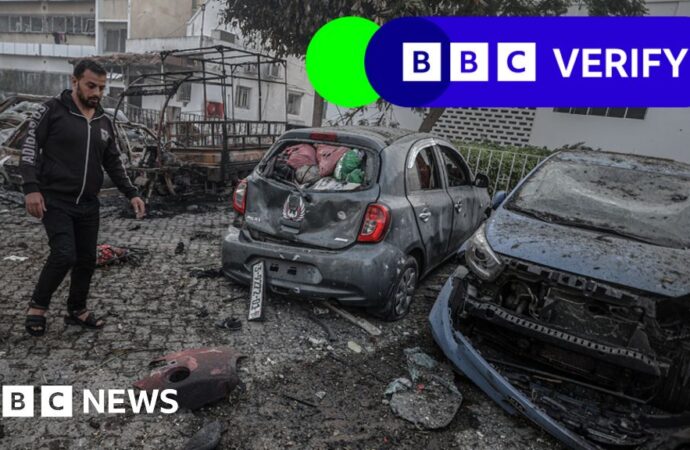Unanswered Questions Surround Gaza Hospital Blast: An Analysis
Introduction:
The explosion at Al-Ahli Arab hospital in Gaza City, which occurred nine days ago, still remains a subject of debate regarding its exact cause. While the Hamas-controlled Palestinian authorities in Gaza accuse Israel of an airstrike on the hospital, Israel claims that a misfiring rocket from the Palestinian Islamic Jihad (PIJ) group was to blame. The UK and US have also provided their assessments, but the evidence supporting their claims has not been made public. In this EcoReporter segment, we aim to shed light on the incident by analyzing three key areas of focus: the lack of weapon fragments, the crater and damage at the scene, and video footage of a projectile rising over Gaza.
Lack of Weapon Fragments:
One crucial aspect of investigating incidents like this is an on-the-ground examination, including the recovery of debris that could provide insights into the nature and origin of the weapon. However, there has been no evidence of weapon fragments being recovered, and Gaza officials have not provided any significant updates on their investigation. Hamas officials claim that the missile responsible for the blast has disintegrated beyond recognition. Experts find this claim highly unusual, as it is atypical for a blast site not to yield debris. Former UN war crimes investigator Marc Garlasco expressed his surprise, stating that in his 20 years of investigating war crimes, he has always found weapon remnants. This lack of evidence raises questions about the true cause of the explosion.
The Crater and Damage at the Scene:
Photographs taken immediately after the blast reveal that it left only a small crater. Experts have noted that this crater is much smaller than the damage typically caused by precision-guided munitions often used by Israel. These munitions are known for their ability to flatten buildings or destroy underground structures. If such a munition had been responsible for the explosion, it would have left a much larger and deeper crater. Some commentators have suggested that the lack of a large crater could be explained by the use of an “air burst” munition, which explodes above the ground. However, experts consulted by the BBC Verify team argue that the blast scene does not align with this theory. Instead, they believe a rocket or smaller munition is the most likely cause based on the pattern of damage on the ground.
Video Footage of a Projectile Rising over Gaza:
The video footage of a projectile rising over Gaza has been central to Israel’s description of what happened. However, this footage alone does not provide conclusive evidence of the cause of the blast. It is essential to consider the other factors, such as the lack of weapon fragments and the size of the crater, to fully understand the incident. While this footage may suggest one possible scenario, a comprehensive analysis requires a holistic approach.
Conclusion:
The Gaza hospital blast remains a contentious issue, with conflicting claims from various parties. The lack of weapon fragments and the size of the crater raise doubts about the initial explanations provided. The analysis by the BBC Verify team, along with other media outlets and social media experts, suggests that a rocket or smaller munition is the most likely cause. However, further investigation is necessary to establish the truth behind this tragic incident. As EcoReporter, we will continue to monitor developments and provide updates to ensure a comprehensive understanding of the environmental and humanitarian consequences of such events.









